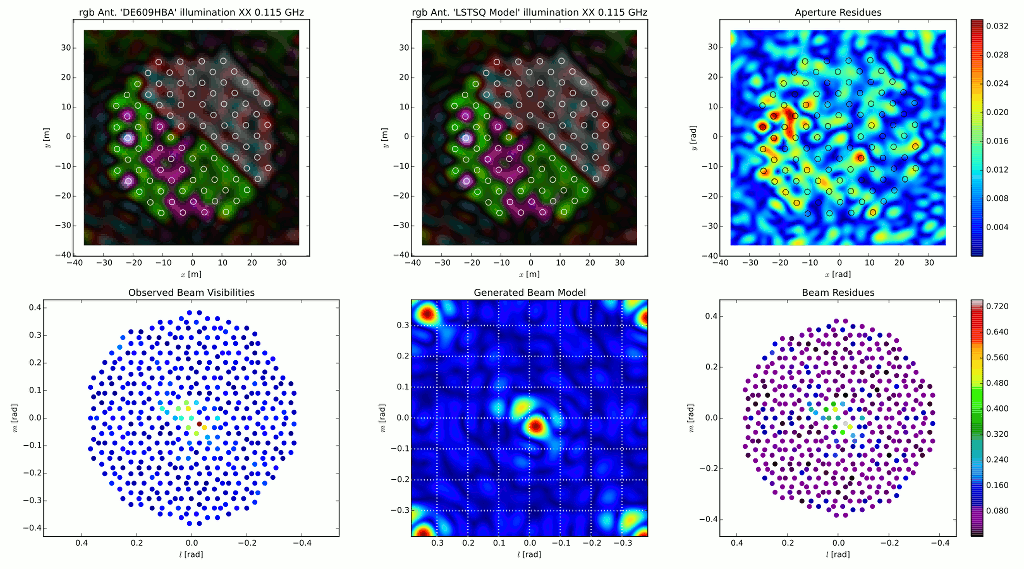| Description: | Over the summer development began on applying holography to improve LOFAR's station calibration. Current calibration methods require 24 hours of all-sky imaging followed by an equal period of post-processing, making station calibrations a costly ordeal. So far initial holography trials have already proven to be highly efficient, allowing one to both observe and reduce the data for the entire LOFAR array within a day, a significant improvement over current methods. At this point we are working on applying the derived solutions produced by our holographic observations to LOFAR's calibration tables.
The following animation gives a quick look at the current state of the project. Presented is the DE609 HBA-field, part of an at the time known poorly calibrated LOFAR station. (Note: The colormap of the top left and middle figures encodes complex values as red = +real, green = +imaginary, purple = -real, and cyan = -imaginary) The figure's two rows show the aperture space [top row] and the beam space [bottom row] that are mutually related through a Fourier transform. The left column shows the reduced data produced by a holographic observation. The beam visibilities [bottom left] show the station’s beam on the sky sampled by digital sub-beams, while its Fourier transform [top left] reveals the complex voltage distribution over the station. The middle column shows the least-squares fitted beam model while the right column shows the residues between the observed data and model. For most frequency sub-bands the beam model and residues show a good fit reaching a couple percent error. However, for some sub-bands both the observations and model fail, notably 220 MHz and 227 MHz that coincide with digital radio broadcasts. |

